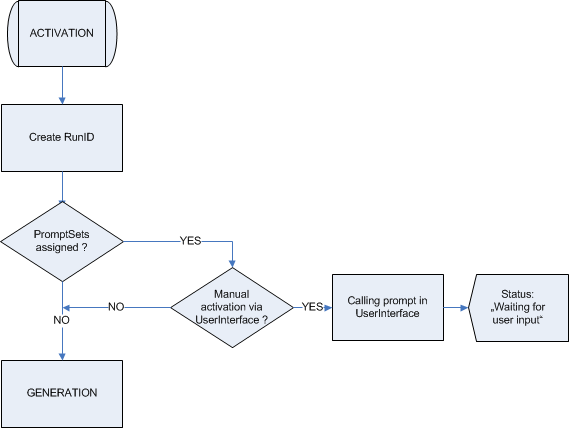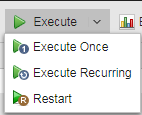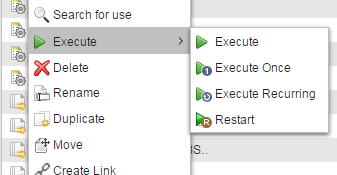1. Activation
Executable objects go through four stages during execution. The activation stage includes the following steps:
- The RunID is assigned to the task.
- The task is displayed in the Tasks list in the (Undefined variable: UIElements.ProcessMonitoring) perspective.
- Workflows and their tasks are activated. At this stage, they are still empty hubs.
- PromptSet objects, and PromptSets assigned to objects, are resolved.
- READ: statements are read.
See Generating at Activation or at Runtime to understand the implications of generating objects at activation time.
The following diagram illustrates the steps that a task undergoes during activation:

|
Type of activation |
Description |
|---|---|
|
Workflow |
Executes objects in a defined order. For details see Workflow Overview |
|
Schedule |
Starts objects in predefined intervals. For details see Schedule Objects (JSCH) |
|
Recurring tasks |
Also run in intervals. For details see Executing Objects - Recurring |
|
Group |
Executes objects collectively. For details see Job Group (JOBG) |
|
Script element |
ACTIVATE_UC_OBJECT or RESTART_UC_OBJECT activates objects. For details see Script Elements - Ordered by Function |
|
Object settings |
Start objects in reaction to defined conditions ( Preconditions, Postconditions, Conditions properties tab in a workflow task). |
|
Manually |
The Automic Web Interface provides several ways of executing objects manually:
|
See also:

